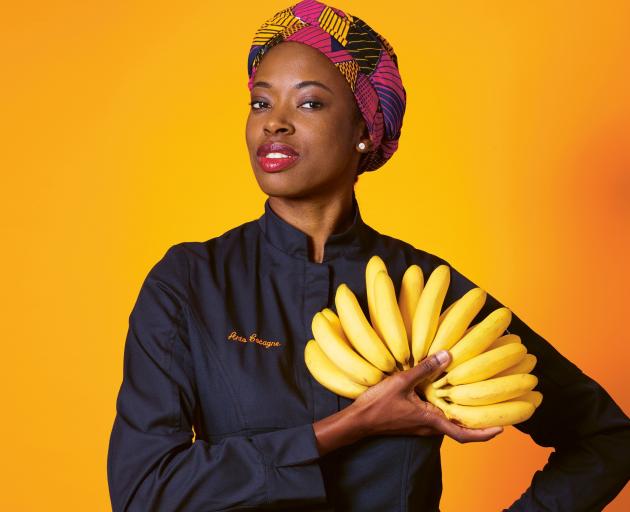
Princet, a culinary photographer, wanted to place it "squarely in the spotlight" and sought to dispel some of the "deeply rooted yet unfounded misconceptions associated with it".
The book Saka Saka is more than a cook book because it also shares the stories of various personalities with African heritage — an artist, writer, choreographer and fashion designer who are champions of Sub-Saharan African culture.
They describe their favourite dishes and the sensory experiences associated with those favourites.
"Cooking, like a song or a tune, can transport us back to an exact time and place, to a specific emotion ... and this is a universal feeling. Taste can bring back childhood memories, especially for those who are far from home and their culture."
The book is named after the cassava leaf dish that is a staple across the African continent, appearing in a variety of different forms with different names.
She says it pays tribute to the many food-loving Africans and reveals a "little piece" of this "blended, positive and epicurean continent".
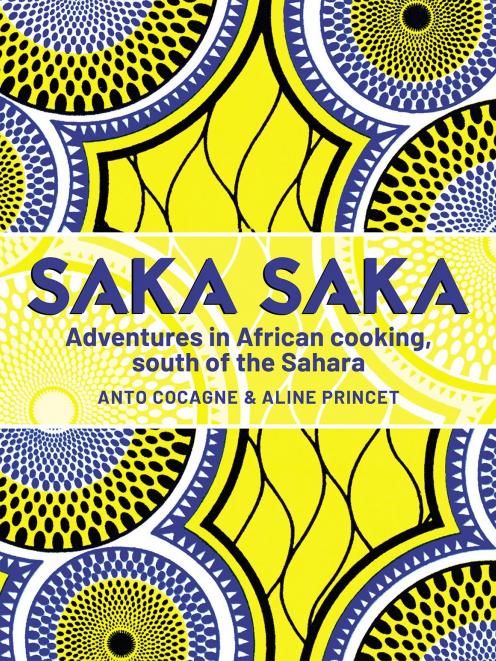
"There are actually as many African cuisines as there are African countries, cultures and dialects. While the Maghreb region is the most well-explored the Sub-Saharan region is yet to be explored."
Traditionally they use a combination of local produce such as fruit, grains and vegetables, as most do not have the means to eat meat or fish every day.
Despite criticism the dishes can be too oily or too spicy, co-author Anto Cocagne, a chef who was born in France but grew up in Gabon, says a dish with spices and a spicy dish are two different things and in Africa, they can also do chilli on the side.
"African cuisines are varied and healthy, plus they are often gluten-free, vegetarian and sometimes even vegan."
THE BOOK
This is an extract from Saka Saka by Anto Cocagne & Aline Princet, photography by Aline Princet. Murdoch Books RRP $45.
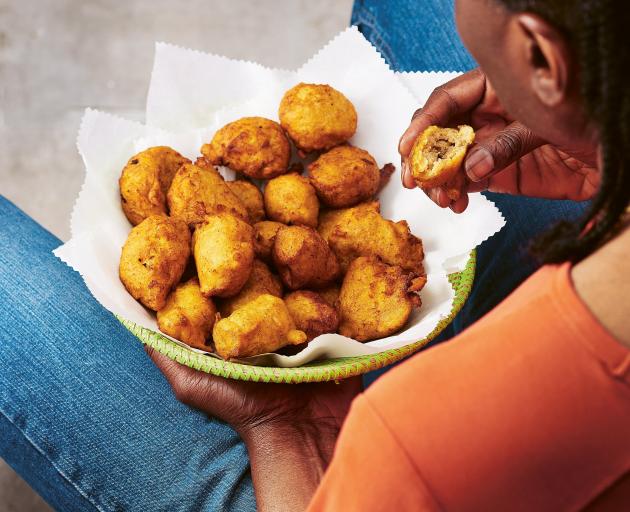
Banana fritters
Makes 25-30 fritters
Difficulty Easy
Preparation 20 minutes + 1 hour resting time
Cooking 30min
6 very ripe bananas
60 g plain (all-purpose) flour
60 g fine cornmeal
1 pinch salt
¼ cup (60 ml) lukewarm milk
6 g bakers yeast
Oil for deep-frying
Method
Peel and cut the bananas into pieces. Place them in a bowl and mash using a fork or rolling pin.
Add the flour, cornmeal and salt and mix until combined.
Mix the warmed milk and yeast in a bowl. Mix the yeast mixture into the banana mixture. Cover the bowl and leave the dough to ferment in a warm place for 1 hour.
Knock down the dough to remove the gas formed by the yeast.
In a deep-fryer, heat the oil to 170-180degC . Using a spoon, make balls of dough and drop them into the hot oil. Cook until golden all over. Drain the fritters on paper towel.
Serve the fritters hot, dusted with icing sugar or drizzled with melted chocolate.
Chef Antos tip
These fritters can be eaten as a sweet snack dusted with icing sugar or with vanilla ice cream, or as a savoury snack with spicy sauce. You can use overripe regular bananas as well as overripe plantain bananas. It’s important to maintain the oil between 170degC and 180degC so the fritters don’t absorb too much oil. If you don’t have a deep-fryer, use a deep heavy-based pot instead.
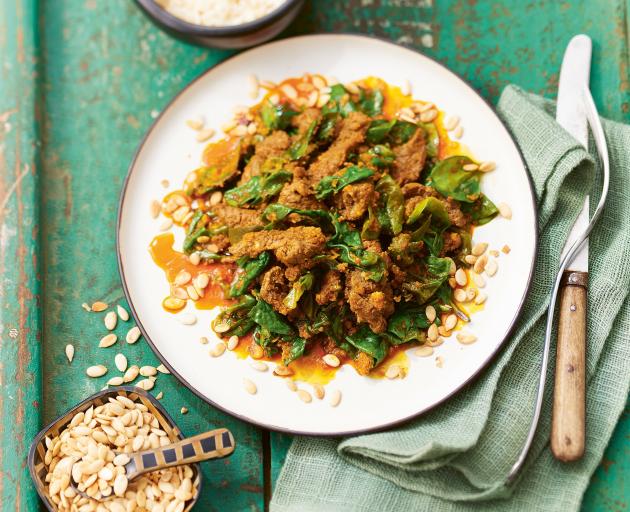
Sauteed beef with spinach sauce
Serves 4
Difficulty Easy
Preparation 20 minutes + 1 hour chilling time
Cooking 30min
500 g beef fillet (or eye fillet)
2 tbsp red nokoss
500 g English spinach
Splash of vinegar, for washing
50 ml red palm oil
4 tbsp orange nokoss (see below)
100 g ground African pistachios or pepitas (see tip)
Salt and pepper
For serving
A few mustard greens
Roasted African pistachios or pepitas
Method
Slice the beef into thin strips. Put the strips in a bowl with the red nokoss and mix well. Cover and set aside for 1 hour in the fridge.
Remove the stalks from the spinach. Wash the spinach leaves in vinegared water and then in clean water, swishing around well. Drain and set aside.
In a fry pan, heat half the red palm oil and saute the beef in small batches for around 2 minutes or until well browned. Set aside. In the same fry pan, sweat the orange nokoss with the remaining palm oil for 5 minutes. Add the spinach and saute briefly, then add the ground African pistachios and stir for 5 minutes. Add a little water if it starts to stick. Add the beef slices and cooking juices and heat briefly. Season with salt and pepper.
Serve the sauteed beef and spinach with white rice. Garnish with a few mustard greens and roasted African pistachios.
Chef Anto’s tip
This dish is a variation of egousi, a dish that is very popular in West Africa. It is generally eaten with offal, especially tripe, but if you are not a fan, a beef fillet will work really well.
African pistachios are nothing like the pistachios we are used to in the West. In Africa, what we call a pistachio is the almond-shaped kernel found in squash or marrow. When these seeds are ground, they have the same properties as almond meal.
Orange nokoss (for vegetables)
Difficulty: Easy
Preparation: 20 minutes
Cooking: 10 minutes
1 carrot
1 brown onion
3 garlic cloves
20 g fresh ginger
2 mild/sweet chillies
1 leek, white part only
1 celery stalk
2 sprigs thyme
2 tbsp turmeric
1 tbsp dried smoked fish
Method
Peel the carrot, onion, garlic and ginger. Deseed the chillies.
Add the carrot to a pot of salted water and bring to the boil. Cook for 10 minutes, then remove from the water. Roughly chop the carrot, onion, leek, celery, garlic, ginger, chillies and thyme and combine in a blender.
Blend everything into a smooth paste. Add the turmeric, smoked fish and 3 tbsp water, then blend again.
Keep the paste in a glass jar in the fridge

Red rice
Serves 6
Difficulty Easy
Preparation 15min
Cooking 45min
300 g parboiled
long-grain rice
¼ cup (60 ml) oil (canola, sunflower or peanut)
2 Tbsp red nokoss (see below)
3 Tbsp tomato paste
150 g tomato passata
2 Selim pepper pods
1 bay leaf
Salt
Chives, to serve
Method
Rinse the rice in cold water and drain. Pre-cook the rice for 10 minutes, either by steaming or in salted boiling water. Drain again.
Heat the oil in a large pot and sweat the nokoss for 3 minutes.
Add the tomato paste and cook over low heat for 6 minutes, stirring occasionally. Mix in the rice.
Add the passata, Selim pepper pods and bay leaf and continue cooking until the mixture has reduced and thickened. Season with salt and add 2 Πcups (560 ml) water (or 1.5 times the volume of rice), then bring to the boil and cook for 3 minutes.
Reduce the heat to very low, then cover and cook for 10 minutes.
Stir the rice with a fork to separate the grains. Cover and leave to cook for a further 10 minutes. Repeat this step until the rice is cooked. Sprinkle with chopped chives.
Serve with grilled meat or dishes with meat and sauce.
Chef Anto’s tip
Red rice in Central Africa is roughly the same as jollof rice or wolog rice in West Africa, or pilau rice in East Africa. This recipe is originally from Senegal but has as many variations as there are countries that claim it as their national dish. Each part of the continent has adapted the recipe according to its history, its environment and the products that today make up its culinary identity.
To make this dish successfully, don’t use round or basmati rice, or long-grain rice that hasn’t been parboiled. You need a rice that remains firm when cooked and doesn’t break up by absorbing the sauce during cooking. It’s best to use jasmine rice or parboiled long-grain rice.
Red rice is always on the table at a celebration. It’s an ideal side to spinach dishes, dishes with a sauce and even grilled food.
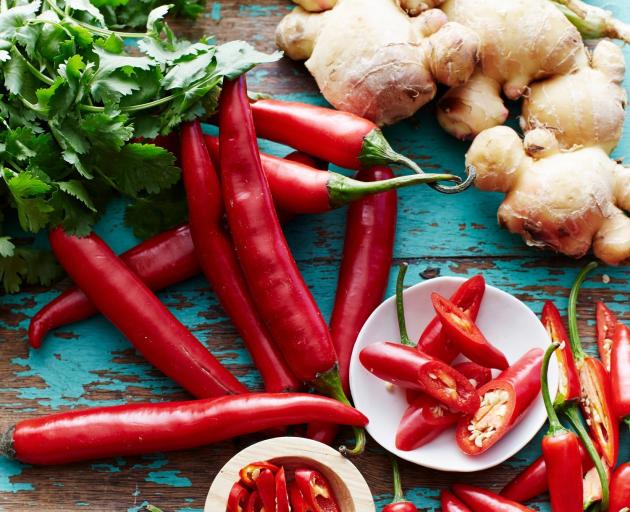
Red nokoss (for meat)
Difficulty easy
Preparation 10min
Cooking None
1 red capsicum (pepper)
2 mild/sweet red chillies
1 red onion
3 garlic cloves
20 g fresh ginger
1 tomato
1 celery stalk
2 sprigs thyme
2 sprigs flat-leaf parsley
1 tbsp soumbala powder
Method
Deseed the capsicum and chillies. Peel and roughly chop the onion, garlic and ginger.
Roughly chop the tomato and celery.
Using a blender, blend the capsicum, chillies, onion, garlic, ginger, tomato, celery and herbs into a smooth paste. Add the soumbala and 3 tbsp water, then blend again.
Keep the paste in a glass jar in the fridge.













